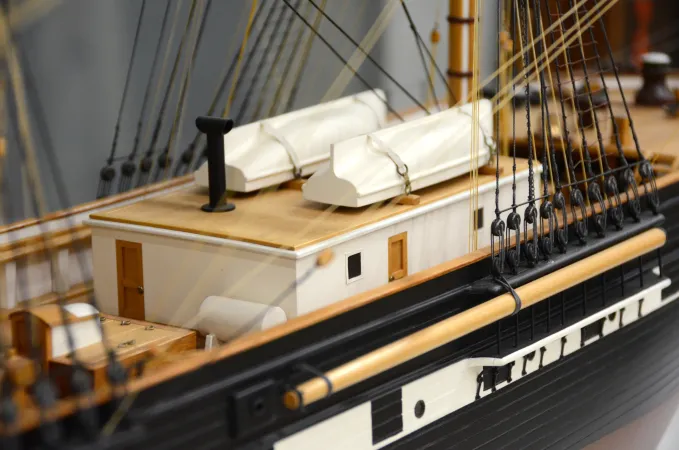Marco Polo Ship Model
This article was originally written and submitted as part of a Canada 150 Project, the Innovation Storybook, to crowdsource stories of Canadian innovation with partners across Canada. The content has since been migrated to Ingenium’s Channel, a digital hub featuring curated content related to science, technology and innovation.
This model commemorates the clipper ship Marco Polo, once the fastest sailing vessel in the world. Built by James Smith in Saint John, New Brunswick, Marco Polo was launched in 1851. The vessel immediately made a record-breaking voyage, crossing the Atlantic Ocean between New Brunswick and England in fifteen days. In 1853, Marco Polo claimed another record after a 68-day voyage from England to Australia, a remarkable passage in the age of sail. The vessel’s speed was a product of design: Marco Polo was a three-masted ship with a large complement of square sails that drove her long sleek hull through the waves. Marco Polo carried settlers from England to Australia for several decades until she ran aground on Prince Edward Island in 1883. While she sailed, Marco Polo proved that New Brunswick’s shipbuilders were among the best in the world.
Marco Polo was launched at Marsh Creek in Saint John, New Brunswick. The creek is now spanned by a small bridge called the Marco Polo bridge. English model-making firm Bassett-Lowke built this model in 1969.

























